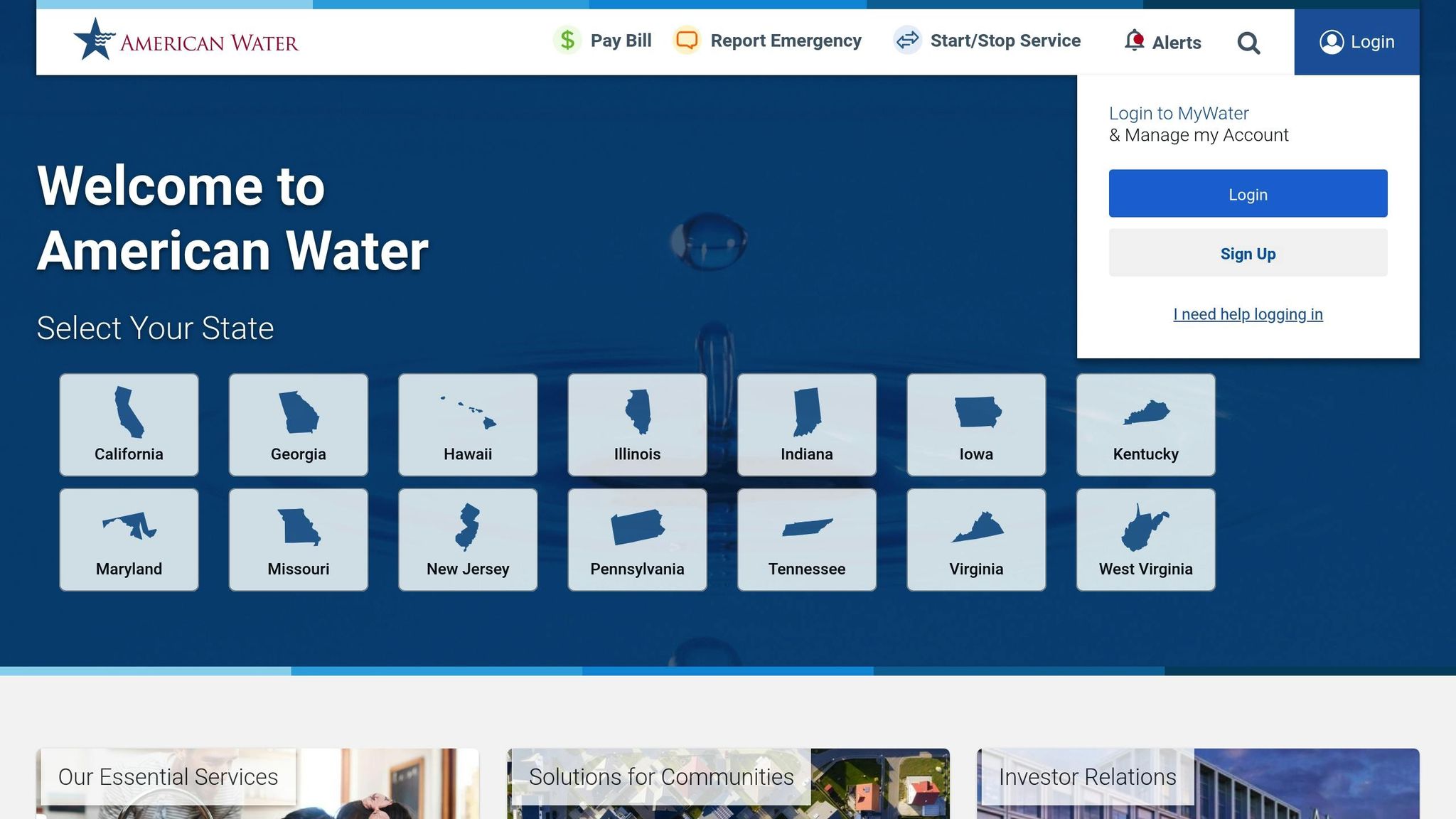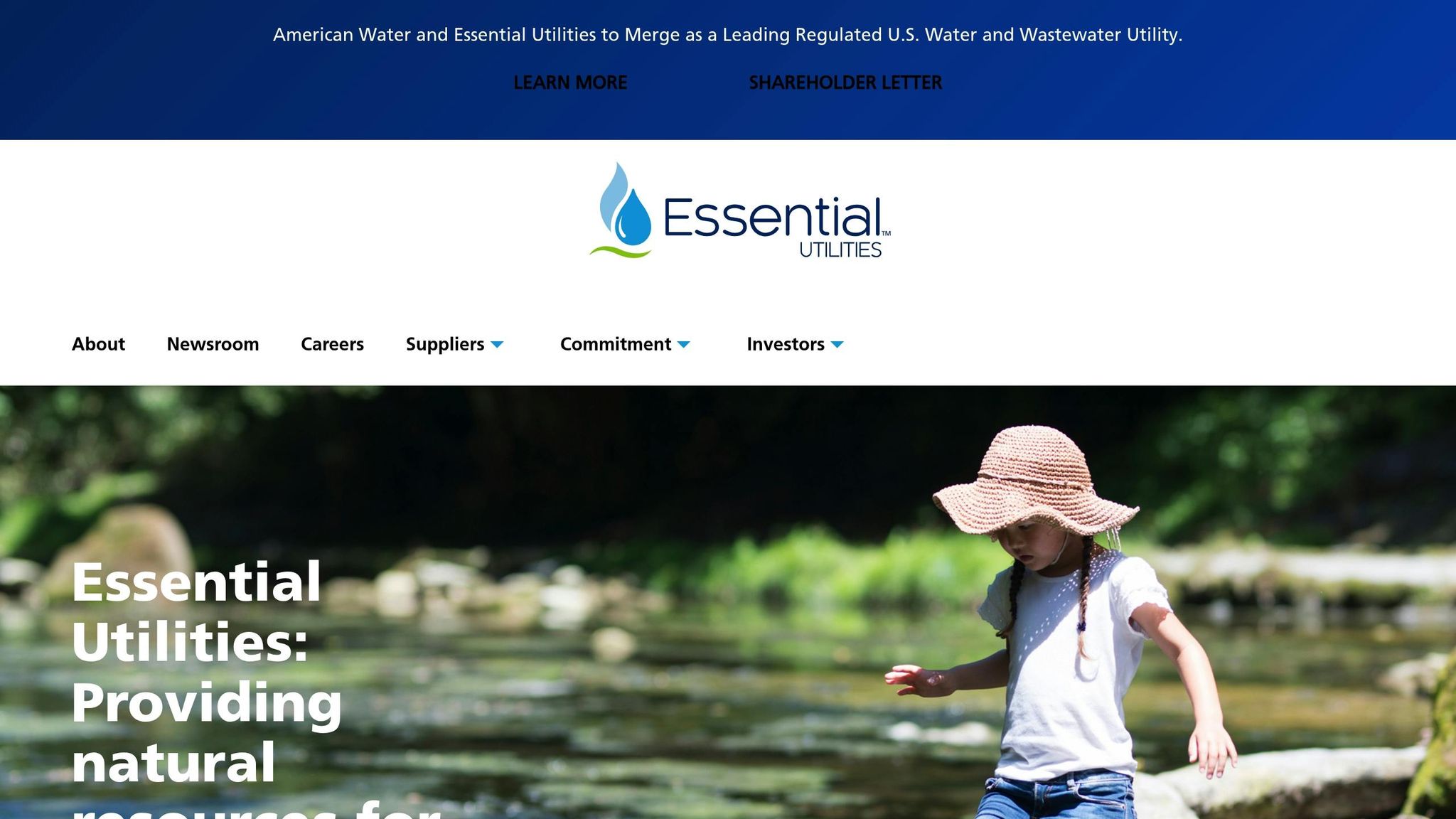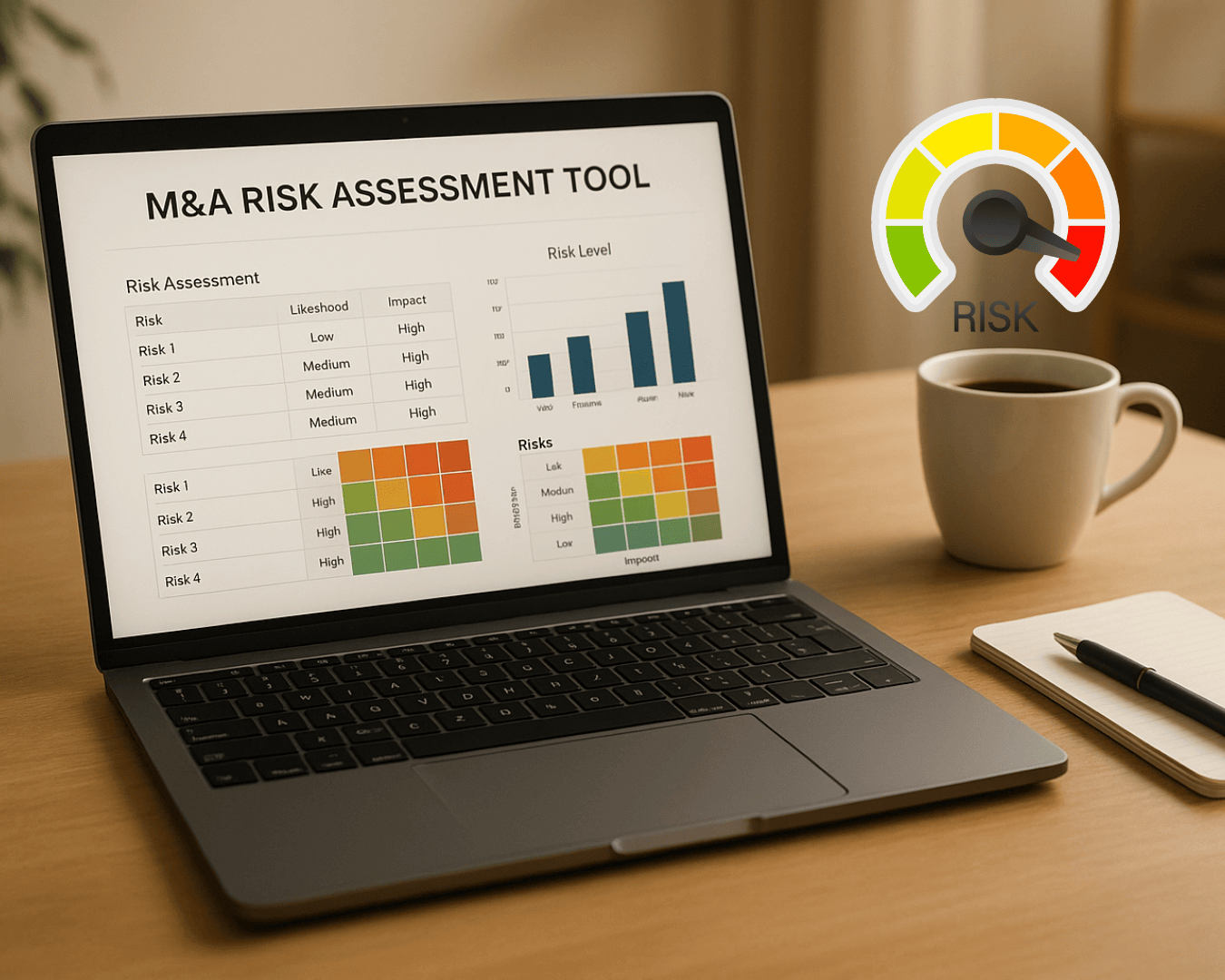American Water Works is set to acquire Essential Utilities in a $63 billion all-stock deal, creating one of the largest water and wastewater service providers in the U.S. The combined entity will serve 4.7 million service connections across 17 states and 18 military installations. Essential shareholders will receive 0.305 shares of American Water for every share they own, representing a 10% premium based on recent stock prices.
Key Highlights:
- Deal Structure: All-stock transaction, tax-free for shareholders.
- Ownership: American Water shareholders will hold 69% of the combined company.
- Financial Impact: Expected to increase earnings per share (EPS) in the first year and support 7–9% dividend growth.
- Infrastructure Investments: $28 billion planned over five years.
- Market Reach: Broader geographic coverage and diversification into natural gas operations.
The merger aims to combine resources, reduce regulatory risks, and improve infrastructure capabilities while maintaining financial stability. Customers may benefit from enhanced service reliability, and shareholders gain access to a stronger financial foundation. However, challenges like integration risks and regulatory approvals remain.
1. American Water Works

Deal Rationale
American Water Works sees this acquisition as a way to broaden its geographic reach, create more stable revenue streams, reduce regulatory risks, and support long-term infrastructure investments.
Financial Structure
The deal is structured as an all-stock, tax-free transaction. This approach helps preserve debt capacity while allowing American Water Works to own about 69% of the combined company on a fully diluted basis. The merger is expected to boost earnings per share (EPS) in the first year and deliver long-term EPS and dividend growth in the range of 7–9%.
Market Impact
This acquisition strengthens American Water Works' position as a major regulated utility. With improved access to equity markets, the company is better equipped to fund future infrastructure projects and achieve more consistent revenue through diversified regulatory oversight.
Business Integration
Following the merger, the combined entity plans to uphold American Water Works' existing dividend policy. With preserved cash flow and debt capacity, the company is set to fund approximately $28 billion in infrastructure upgrades over the next five years. This strategic alignment also opens the door to evaluating Essential Utilities’ contribution to the merger's success.
2. Essential Utilities

Deal Rationale
By joining forces with American Water Works, Essential Utilities brings a well-rounded portfolio that bolsters the combined company's ability to weather market fluctuations. With experience in both water and natural gas distribution, Essential Utilities aligns with American Water Works' strategy to grow and consolidate its operations.
This partnership allows Essential Utilities to tap into American Water Works' deep expertise in water infrastructure management while maintaining its diversified utility offerings. Together, they aim to tackle rising infrastructure costs and navigate complex regulatory landscapes more effectively. This collaboration also lays the groundwork for a more robust financial position, as outlined below.
Financial Structure
The merger, structured as an all-stock transaction, benefits shareholders by preserving debt capacity while granting access to American Water Works' stronger financial standing. Essential Utilities shareholders will exchange their shares for American Water Works stock, giving them a stake in the larger, unified company.
This setup offers Essential Utilities several financial advantages, including improved credit ratings and reduced borrowing costs for future projects. Additionally, the transaction’s tax-free nature allows shareholders to defer capital gains taxes, making it a financially efficient deal.
Market Impact
Essential Utilities' addition brings geographic diversity to the table, enhancing the combined company's market reach. American Water Works' established regulatory relationships and operational expertise further solidify this strengthened position. The inclusion of Essential Utilities' natural gas operations complements the broader utility framework, ensuring steady cash flows across multiple sectors while reducing dependence on any single regulatory environment.
Customers of Essential Utilities stand to benefit from expanded service capabilities and greater investment in infrastructure. The integration plan prioritizes retaining local expertise while enhancing operational performance, ensuring a smooth transition for both companies and their stakeholders.
Business Integration
Essential Utilities will continue its core operations as part of the combined organization, with its natural gas distribution network remaining a key component.
The integration strategy focuses on blending Essential Utilities' local market knowledge and customer relationships with American Water Works' operational best practices. Employees of Essential Utilities will gain new career growth opportunities within the larger organization, while customers can expect improved service quality driven by increased investment in infrastructure and operational enhancements.
American Water and Essential Utilities Merger: A Leading US Water and Wastewater Utility
sbb-itb-a3ef7c1
Pros and Cons
The $63 billion merger between American Water Works and Essential Utilities brings both opportunities and challenges. Weighing these trade-offs is crucial for stakeholders assessing the deal's long-term implications.
| Company | Pros | Cons |
|---|---|---|
| American Water Works | Diversification into natural gas, reducing reliance on water-only operations; Greater scale for stronger regulatory negotiations; More stable cash flow from multi-utility operations | Integration challenges in managing water and gas utilities; Regulatory hurdles across jurisdictions; Cultural differences between the two organizations; Execution risk in achieving projected benefits |
| Essential Utilities | Better credit ratings and improved access to capital; Operational expertise from American Water Works; Career growth in a larger organization; Tax-efficient structure for shareholders | Loss of independence in decision-making; Possible service disruptions during integration; Workforce uncertainty due to restructuring; Shareholder dilution despite stock exchange benefits |
These factors highlight the financial and operational trade-offs involved in the merger.
For American Water Works, acquiring Essential Utilities means immediate access to steady natural gas revenues, which are typically more predictable than water operations. On the other hand, Essential Utilities shareholders stand to benefit from joining a company with better credit metrics and reduced borrowing costs, which could help limit future rate increases for customers.
The potential for operational synergies is a major advantage. American Water Works can bring its advanced water treatment technologies and regulatory expertise to Essential's water systems, while Essential's natural gas operations provide a buffer against water sector volatility. Together, their combined $63 billion market value strengthens negotiating power with suppliers and contractors. Yet, these benefits don't come without hurdles.
Integration challenges loom large. Utility mergers often face 18-24 month regulatory approval processes, during which both companies must balance day-to-day operations with integration planning. The all-stock deal preserves cash but ties Essential Utilities shareholders' returns to American Water Works' stock performance, which could be risky for those seeking diversification.
The impact on customers will vary. Regions served by both companies might see better service coordination, but areas with only one utility could face uncertainty about service levels. The merger's success depends on maintaining Essential's local relationships while implementing American Water Works' operational standards across a variety of markets.
Conclusion
The $63 billion merger between American Water Works and Essential Utilities marks a major shift in the U.S. utility landscape. This all-stock transaction establishes the largest regulated water and wastewater utility in the country, boasting a projected market capitalization of around $40 billion and serving approximately 4.7 million water and wastewater connections across several states.
For American Water Works, the merger broadens its reach and strengthens its treatment capabilities. Essential Utilities' shareholders, on the other hand, benefit from a premium and greater access to capital. The deal is expected to increase earnings per share in its first year while supporting long-term dividend growth. This financial momentum is set to fuel ongoing infrastructure improvements and maintain stable service rates. On a broader scale, the merger reflects a growing trend of consolidation within the utility sector.
This industry-wide push toward consolidation is largely driven by the need to address aging infrastructure and meet capital demands. The newly combined company has also signaled plans to evaluate strategic options for non-core operations, including Essential's natural gas business. This move highlights a clear focus on water and wastewater services, ensuring the company can provide specialized expertise in these critical areas.
Customers stand to benefit from improved service coordination, while employees will see expanded opportunities. For shareholders, the merger strengthens the financial foundation, enhancing long-term value.
The true measure of this merger’s success will go beyond financial performance - it will include its ability to deliver reliable infrastructure, fair rates, and exceptional service to communities across the U.S. utility sector.
FAQs
What does the merger between American Water Works and Essential Utilities mean for customer rates and service reliability?
The merger is set to ensure consistent and reliable service for customers, all while sticking to a long-term growth target of 8–9% for the rate base. And here's the key takeaway: customer rates won't be affected by this transaction.
By joining forces, the new company plans to boost operational efficiency and maintain dependable water and wastewater services, keeping any disruptions to customers and communities at an absolute minimum.
What challenges might arise during the integration of American Water Works and Essential Utilities, and how could these impact the merger’s timeline and overall success?
The merger between American Water Works and Essential Utilities might encounter obstacles, particularly with regulatory approvals, stakeholder agreements, and the task of synchronizing operations between the two companies. These challenges could potentially affect the timeline, with the merger currently projected to wrap up by early 2027.
Key risks include potential delays in obtaining the necessary clearances from public utility commissions and the complexities of aligning the operational frameworks of both organizations. Tackling these issues effectively will play a crucial role in ensuring a seamless transition and realizing the strategic objectives behind the merger.
What does the all-stock deal mean for shareholders, and how will it impact the investment value for Essential Utilities shareholders?
Under the agreement, Essential Utilities shareholders will receive 0.305 shares of American Water for every Essential share they own. This exchange reflects a 10% premium, calculated based on the average stock prices over the past 60 trading days. Following the merger, American Water shareholders will own roughly 69% of the newly combined company, while Essential Utilities shareholders will hold about 31%.
For Essential shareholders, this arrangement offers the potential to grow their investment by gaining ownership in a larger, more diverse utility company. Since the deal is structured entirely in stock, shareholders can also take advantage of the combined company's growth and operational efficiencies without facing the immediate tax consequences that often come with cash-based transactions.





























.png)








































%20Loan%20Application%20Checklist.png)







































